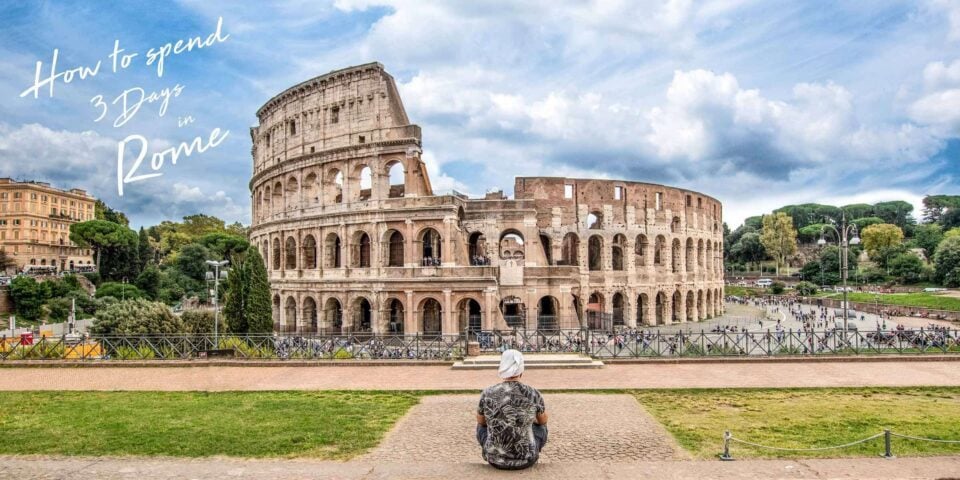This time is not enough to see all the city’s attractions. However, you will be able to see the most famous squares, palaces, parks, monuments, and museums that the Eternal City is rich with. The main thing is to plan your route correctly and decide in advance what to see in Rome in 3 days on your own.
Some travelers advise starting your acquaintance with the Eternal City through sightseeing tours. This approach has a significant drawback: due to the enormous amount of impressions, information about ancient monuments quickly turns into confusion. To prevent this from happening, calculate in advance the time you can devote to individual attractions.
And another tip about tourist souvenirs: if you prefer to buy items at reasonable prices, don’t purchase goods in shops that are next to attractions. Turn onto neighboring streets – and you’ll be surprised by more affordable prices. Italians don’t traditionally bargain, yet they have found an elegant way to bypass this national tradition through discounts and this kind of competition between shops.
How to Get from the Airport to the Center
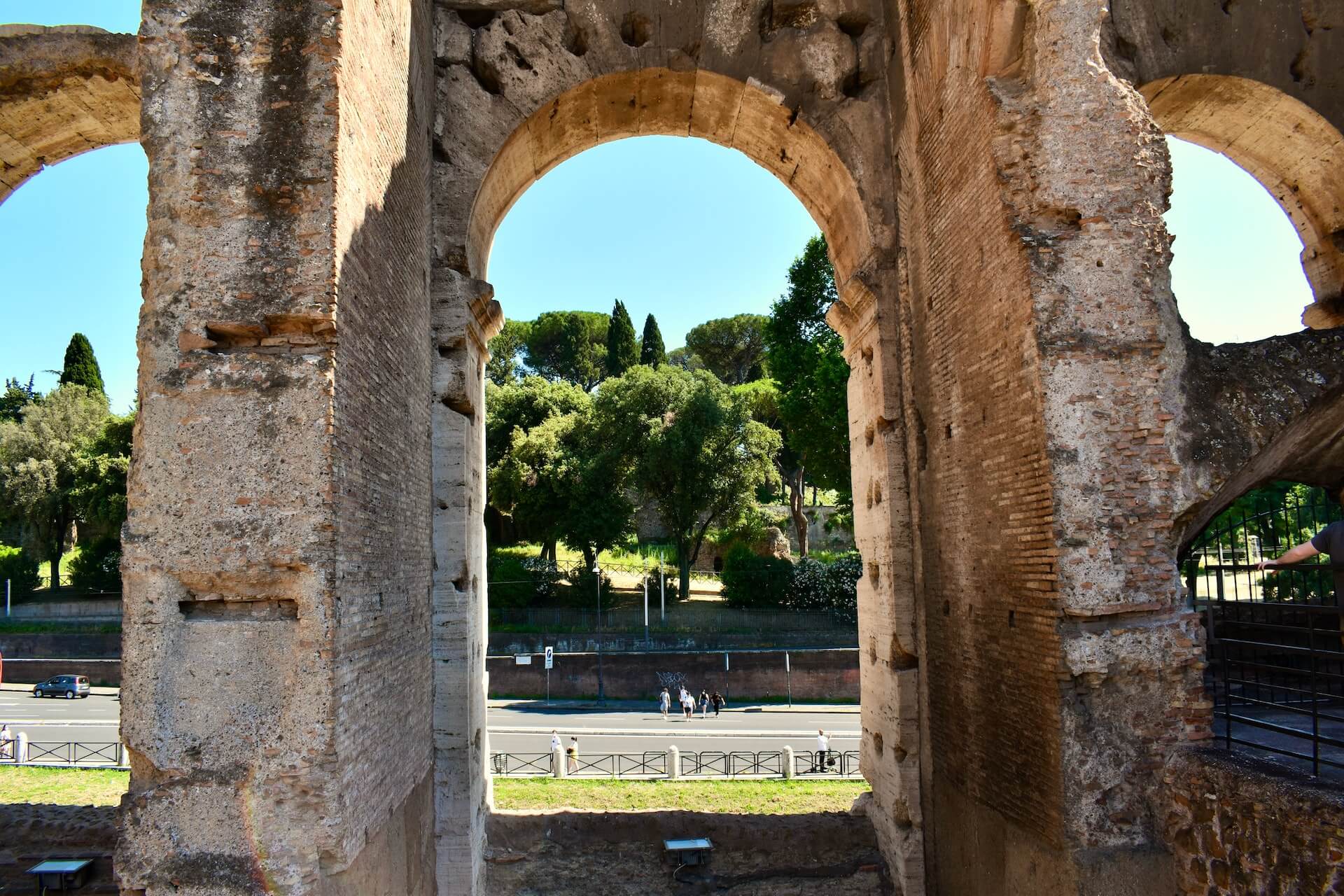
There are various options for solving this issue. Notably, each route from the airport to the city center has its own particular advantages. Trains, taxis, and buses run from L’aeroporto di Roma-Fiumicino to this part of Rome and back. It should be noted that public transport schedules may change, so it’s best to check them in advance on the official websites of transport companies.
One of the most popular options for traveling between the airport and the city center is the express train (Leonardo Express). These trains run between the airport and the central city station Termini. The journey between the two points takes half an hour. Express trains arrive at the departure station every 15 minutes.
The only downside: this transport moves without stops. Its first daily route from the airport is at 6:08. Please note: express trains do not run around the clock. Their last daily trip is until midnight. If you decide to save money as much as possible, you should, of course, choose a suburban bus.
The journey will take twice as long, but you’ll be able to enjoy the most beautiful Italian architectural landscapes. You can be taken to your destination by buses from companies: “Cotral”, “Sit bus Shuttle”, “T.A.M.”, “Terravision”, “Rome Airport Bus”.
Please note: each of them has its own stop near the airport. And another important nuance: Italian transport companies mainly practice 30-minute breaks between trips.
Day 1
It’s best to dedicate this time to exploring the legendary Roman hills and architectural complexes. Yes, you’ll be on your feet almost all day, but you won’t get tired if you choose monuments that are within walking distance of each other. Please note: many exhibition complexes in Rome organize free admission days for tourists and locals. The schedule for such events varies, and information about them can always be found on the official websites of the museums.
Palatine Hill
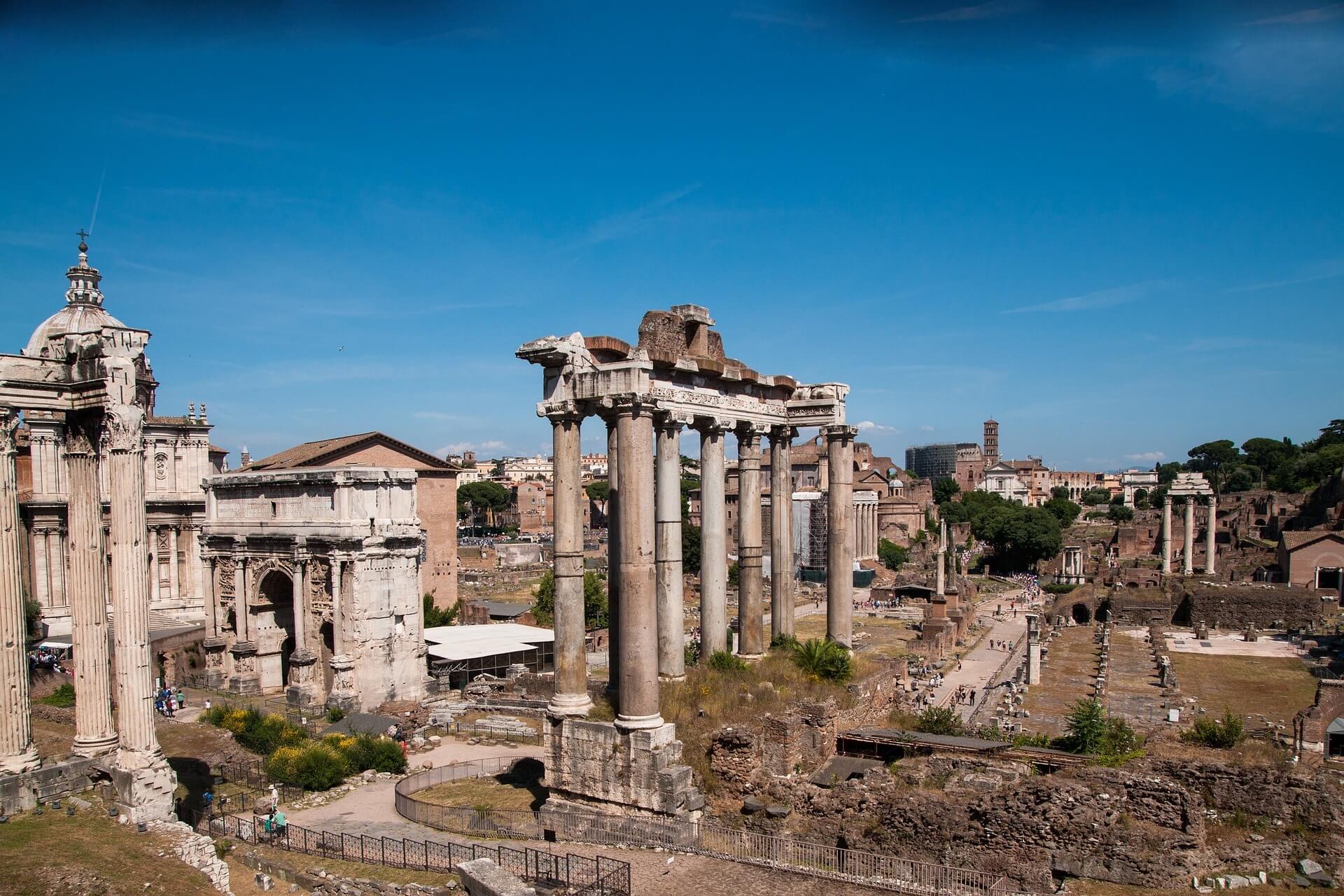
The 40-meter-high hill is rightly called one of the most legendary, iconic places in Rome. It’s believed that a city built on 7 hills will exist forever. That’s why people in ancient and later times sought to choose locations with such a number of hills for building megalopolises. The list of cities built under this condition includes Moscow, Istanbul, Prague, Kyiv, and other million-plus cities.
The entrance to the Palatine is open daily (except for Catholic Christmas and New Year holidays) from 9:00 AM until evening. Its territory houses a huge number of attractions: palaces of aristocrats, Christian churches, altars of ancient gods, thermal baths, houses of emperors, and outstanding political figures of antiquity.
It’s on the Palatine where you can see the house of one of the legendary founders of the Eternal City: Romulus. He was the twin brother of Remus, also nursed by a she-wolf. The Romans considered the brothers to be illegitimate children of a vestal who didn’t maintain her virginity, and Mars (god of war).
Romulus, in the heat of an argument, killed his twin, then founded a city named after his brother, and disappeared without a trace during a solar eclipse. Later, he became one of the most revered deities in Ancient Rome.
Colosseum

Please note: at the ticket offices of the Palatine, Roman Forum, and Colosseum, there’s always an option to purchase combined tickets for all three sites. These attractions are located close to each other, but the queues for tickets (if not bought online) are always the longest at the Colosseum.
Experienced travelers advise buying combined tickets (valid for 2 days) at the ticket offices of the Roman Forum or Palatine. An important detail: children under 18 have the right to visit these historical sites for free. The giant, partially ruined building of the Colosseum always makes an indelible impression on city guests. The walls of the ancient Roman amphitheater reach 48 meters in height, but originally they were even taller.
To construct the building, the Romans used natural stones, bricks, and concrete. Slaves from Judea worked on the construction of the Colosseum. The war with Judea brought Romans enormous spoils. In total, 100,000 slaves participated in the production of building materials, construction, and finishing of the structure.
The construction of the Colosseum lasted 8 years. The work was personally supervised by two Roman emperors. Within the walls of this structure, gladiatorial fights, animal hunts, naval battles, and mass executions of Christians took place. It burned several times, suffered from earthquakes, and still didn’t disappear from the map of the planet.
Roman Forum
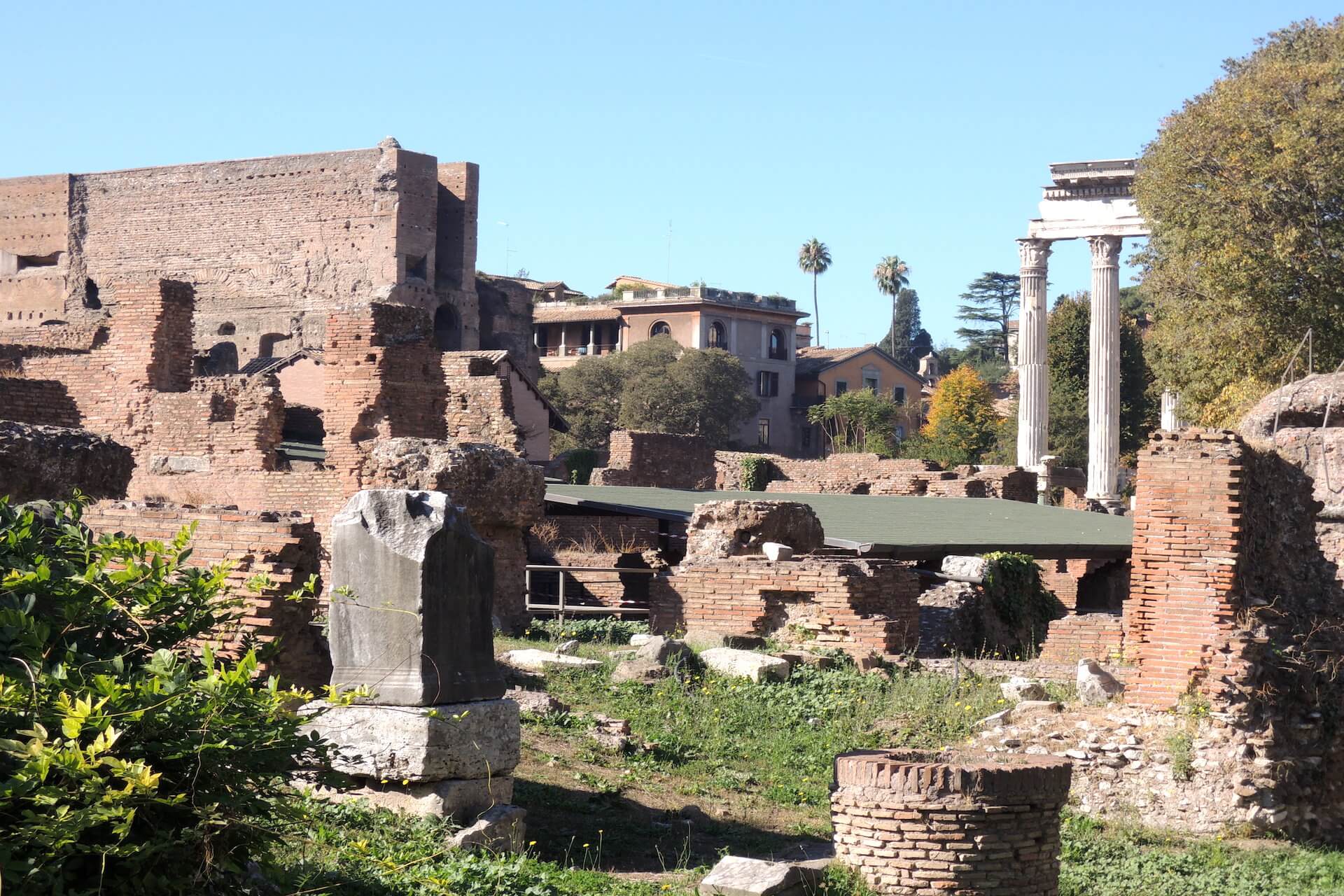
The complex is located closer to the Palatine than to the Colosseum. On its territory, you can see a huge number of ruins of ancient buildings. The ancient road, built for processions in honor of the gods, and a huge archive building are well preserved here. This place in Ancient Rome simultaneously served as the main urban socio-political platform and market. Here, Romans held court sessions, worshipped gods, and executed particularly dangerous criminals.
The very first temple on the forum was dedicated to Venus, the goddess of love. There are legends about how the Romans planned to conduct ceremonies in her honor here, but Saturn (god of time and agriculture) also decided to take the forum under his patronage. Love and Time resolved everything amicably, and people built a temple in honor of Saturn and began each new year’s celebration from this sacred place.
In reality, the imperials had another war (with the Etruscans), in which Rome emerged victorious. Paradoxically, the Romans did not dedicate the new forum to the warlike god Mars but invested the profit from sold trophies in the construction of a commercial complex.
Arch of Constantine
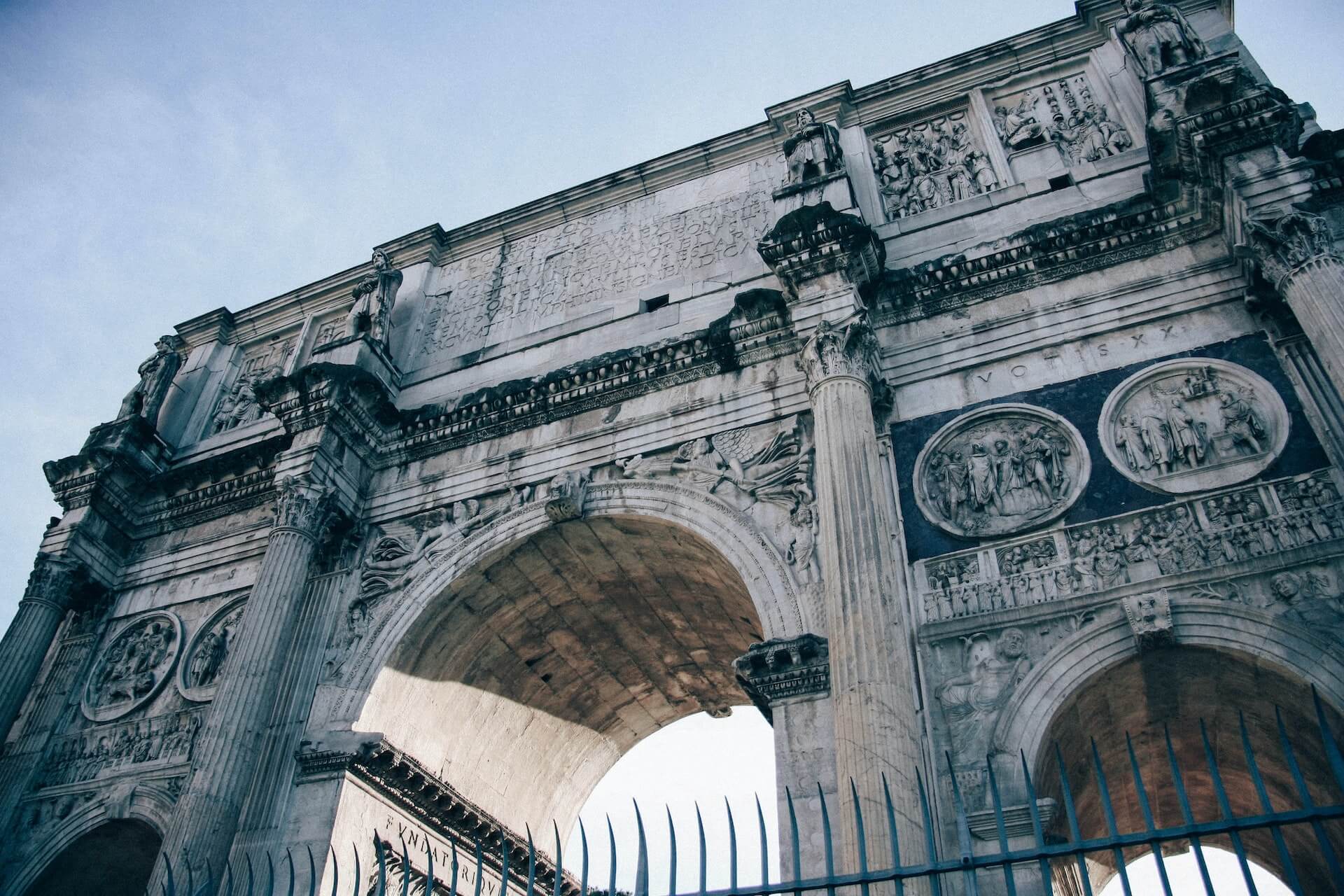
The monument is located between the Colosseum and the Palatine. It was built more than 1700 years ago. The monumental arch consists of 3 spans. It is decorated with skillful marble carvings depicting scenes from the lives of gods, Emperor Constantine, and his predecessors (rulers of the empire). Its elements were created at different times, but the sculptors managed to harmoniously unite them into a single whole.
To be honest, the monument had a purely political significance in its time. In Ancient Rome, it was customary to officially divide emperors into good and bad ones. When the imperial cult once again fell into decline due to despots and economic crises, the Romans came up with an elegant solution: each living emperor would adopt his successor (the next emperor).
This temporarily ensured stability in the state and prevented civil war. Then Rome again slid into an economic abyss, but the desire of its new rulers to count themselves among the good emperors remained. And here’s a typical example of creating a positive political image: Constantine ordered the construction of a 21-meter high arch in honor of a military victory and a good emperor, that is, himself.
Capitoline Square
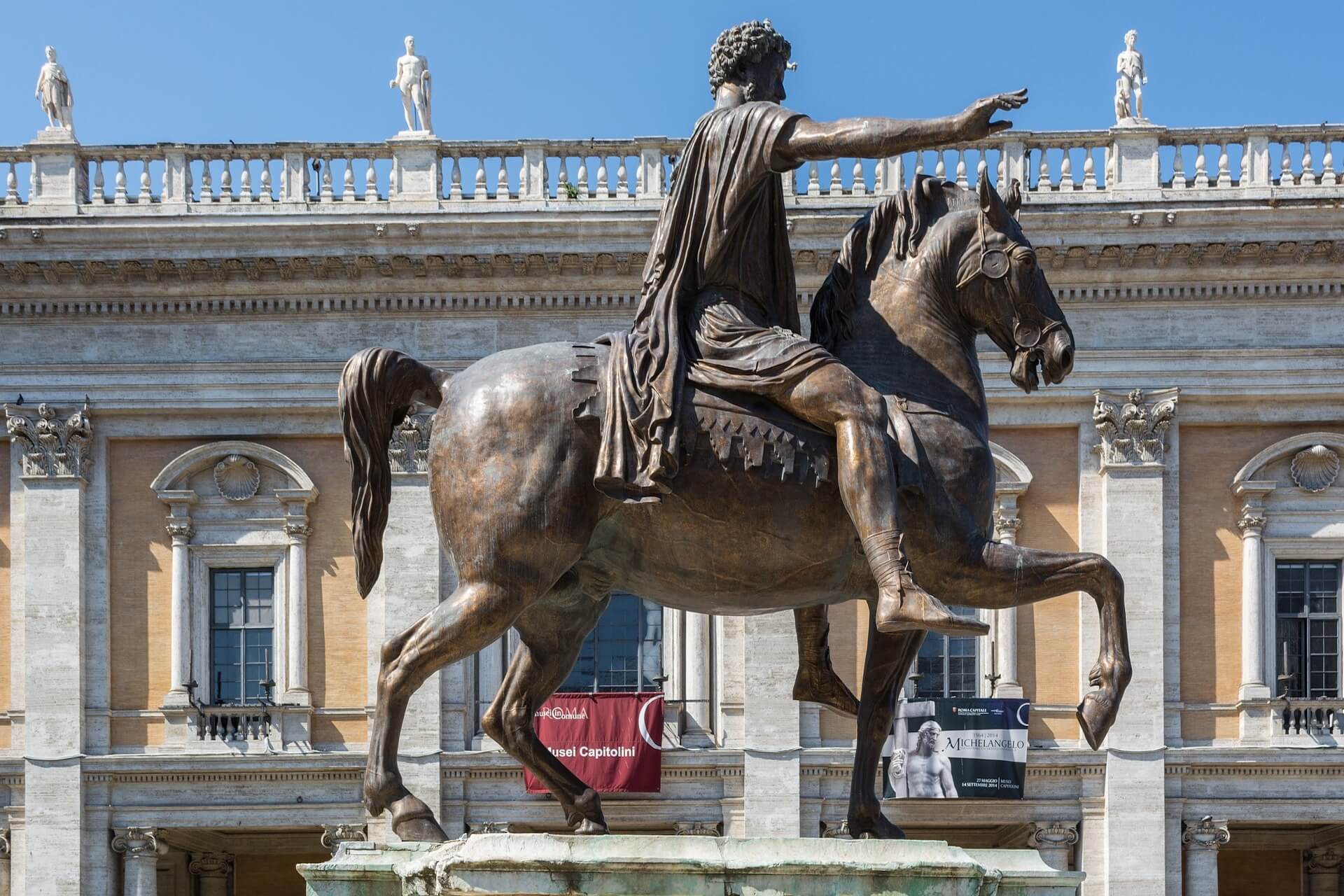
The architectural ensemble on the hill of the same name is literally mesmerizing in its grandeur. In ancient times, solemn religious ceremonies, meetings of the senate and free citizens of the Eternal City took place here.
In the Middle Ages, the buildings and structures on the Capitoline Hill were in a ruined or semi-ruined state, but about 500 years ago, large-scale restoration work began here. It was led by legendary creative personalities: Michelangelo, Porta, and Rainaldi. Thanks to the support of the Catholic Church and the desire of geniuses to save unique monuments, the Capitoline Square acquired a new look.
Today, it is surrounded by magnificent palaces. In the center of the square stands a replica of the equestrian sculpture of Emperor Marcus Aurelius. This ruler became famous for contributing to the development of philosophy and jurisprudence, and for creating the popular collection of aphorisms “Meditations”.
Another famous attraction of the square is the Cordonata staircase. This structure is built, like the Arch of Constantine, on the principle of connecting different elements. It is decorated with sculptures of Egyptian lions, Roman deities, statues of emperors, milestones, and fragments of an ancient fountain.
Capitoline Museums
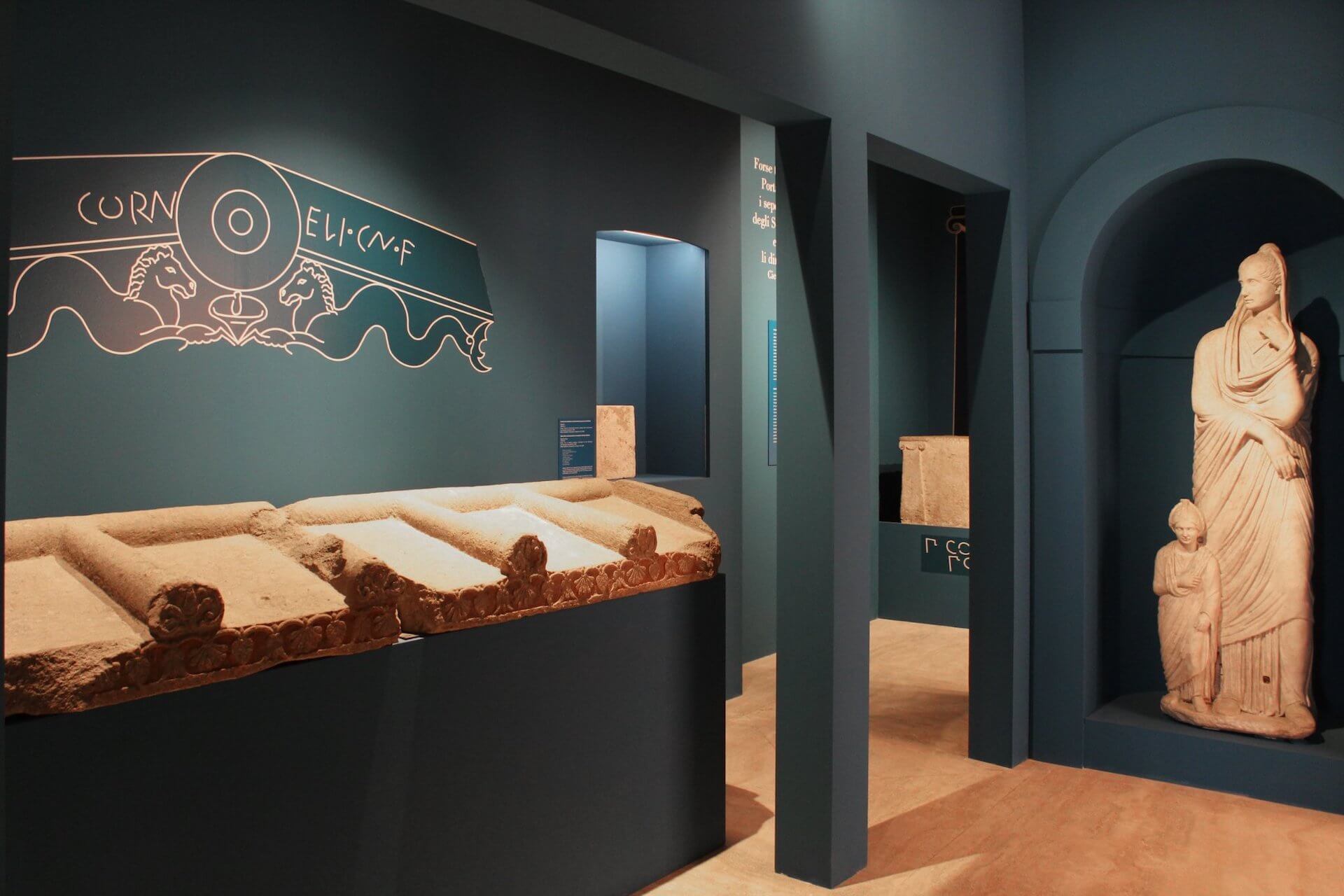
This term is used to refer to the palaces surrounding the square of the same name. The first exhibition space here began operating almost 300 years ago in the Palazzo Caffarelli-Clementino, but its preparation for housing art masterpieces began back in 1471.
Once, on the site of the Palazzo Caffarelli-Clementino, there was a temple of Jupiter, and priests conducted “prediction sessions” exclusively on political topics. Fragments of walls, foundations, niches, columns, and magnificent mosaics remain from that structure. All of these were discovered through excavations and possess, as mystics assure, the most powerful energy.
The palace buildings housing the exhibitions are connected by underground galleries with preserved elements of ancient structures. Here you can see (known from school history textbooks) masterpieces of art: sculptures of the Capitoline Wolf who nursed Romulus and Remus, Venus, and other deities.
The palaces house metal and marble figures of emperors, philosophers, political figures, and centaurs. Here you can also see ancient bas-reliefs, Etruscan and Greek vases, and ultra-modern contemporary installations.
The exhibition spaces are open daily. They are closed only 3 days a year: on Catholic Christmas, New Year’s Day, and May 1st. Please note: if you happen to be in Rome on the first Sunday of any month, you can visit these museums for free.
Piazza Venezia
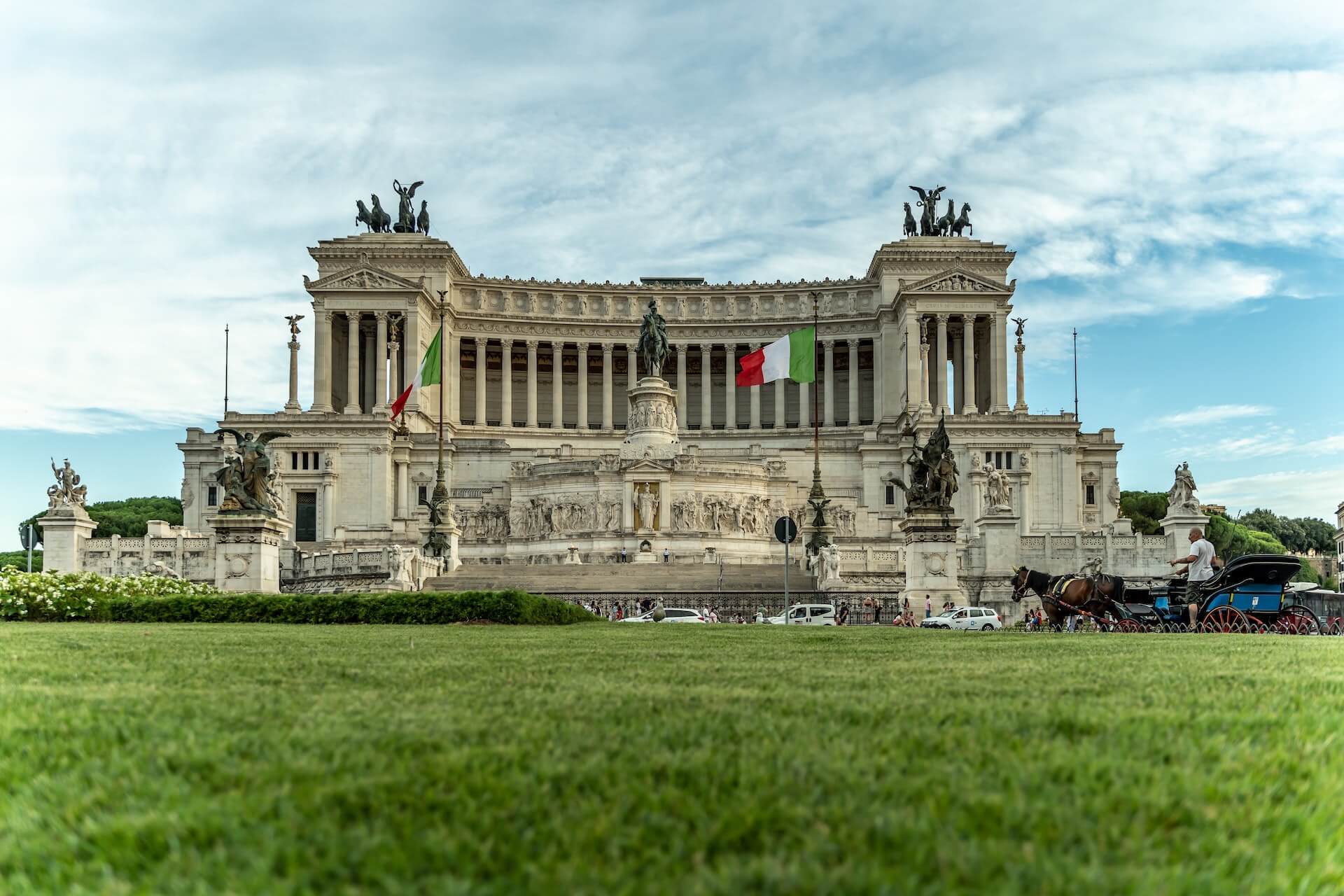
This famous landmark is located near the Roman Forum. In ancient times, 3 major educational institutions operated here. The square is named after a palace built almost 600 years ago. Piazza Venezia was formerly located at the intersection of the city wall and an ancient road, and today buildings of three city streets stand in place of these objects.
The appearance of the square has changed over the centuries, mainly due to political cataclysms. Buildings around it were reconstructed, demolished, and rebuilt to accommodate influential nobles and diplomats. After all these urban changes, two symmetrical architectural compositions remained here: the Venezia and Bonaparte palaces.
They look harmonious, although executed in different styles. Today, such an architectural solution wouldn’t surprise anyone, but once it was a real revolution in art. The list of main attractions of the square includes a Catholic church building, ruins of an ancient basilica, and the triumphal column of Emperor Trajan.
Here you can also see the grandiose neoclassical Vittoriano monument. It is dedicated to the idea of state unity, the greatness of royal power, and the strength of the Italian spirit.
Trevi Fountain
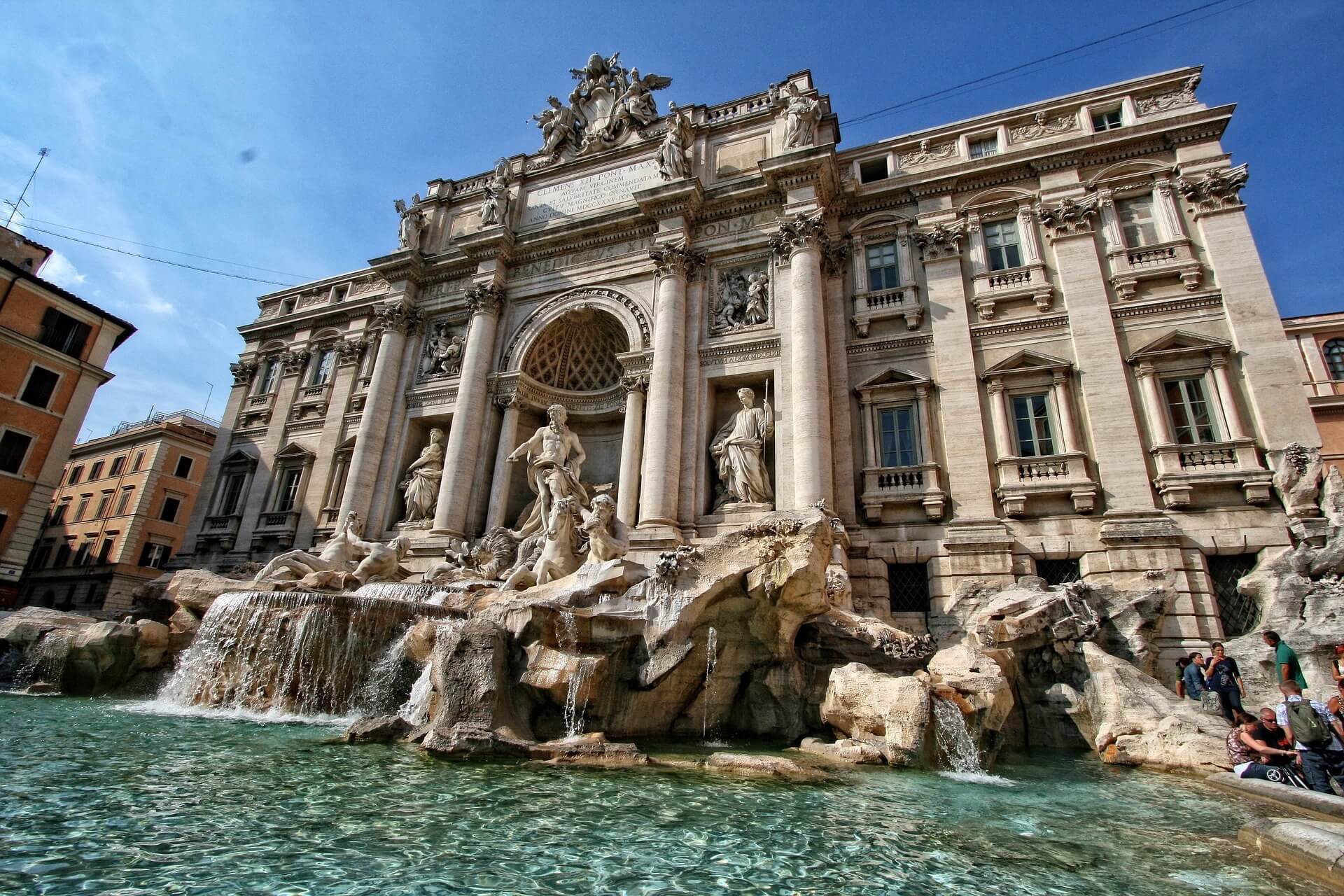
The 26-meter-high and 49-meter-long structure is built according to the canons of Baroque, Rococo, and Neoclassicism. It is often called the most beautiful and popular fountain in the world in travel guides. Access to the attraction is open 24/7. Trevi is located at the intersection of three streets, precisely where ancient Romans used to draw water for drinking and household needs.
The fountain is adorned with the figure of Neptune. Surrounding the sea god are sculptures of minor deities symbolizing natural elements and seasons. Notably, the structure could have appeared in the city 400 years ago, but its construction was postponed for 100 years due to financial and political problems.
Externally, Trevi resembles a massive triumphal arch. The fountain forms a single architectural ensemble with the Palace of Poli. Annually, tourists throw small coins into Trevi (making wishes) amounting to 1.5 million euros.
Pantheon
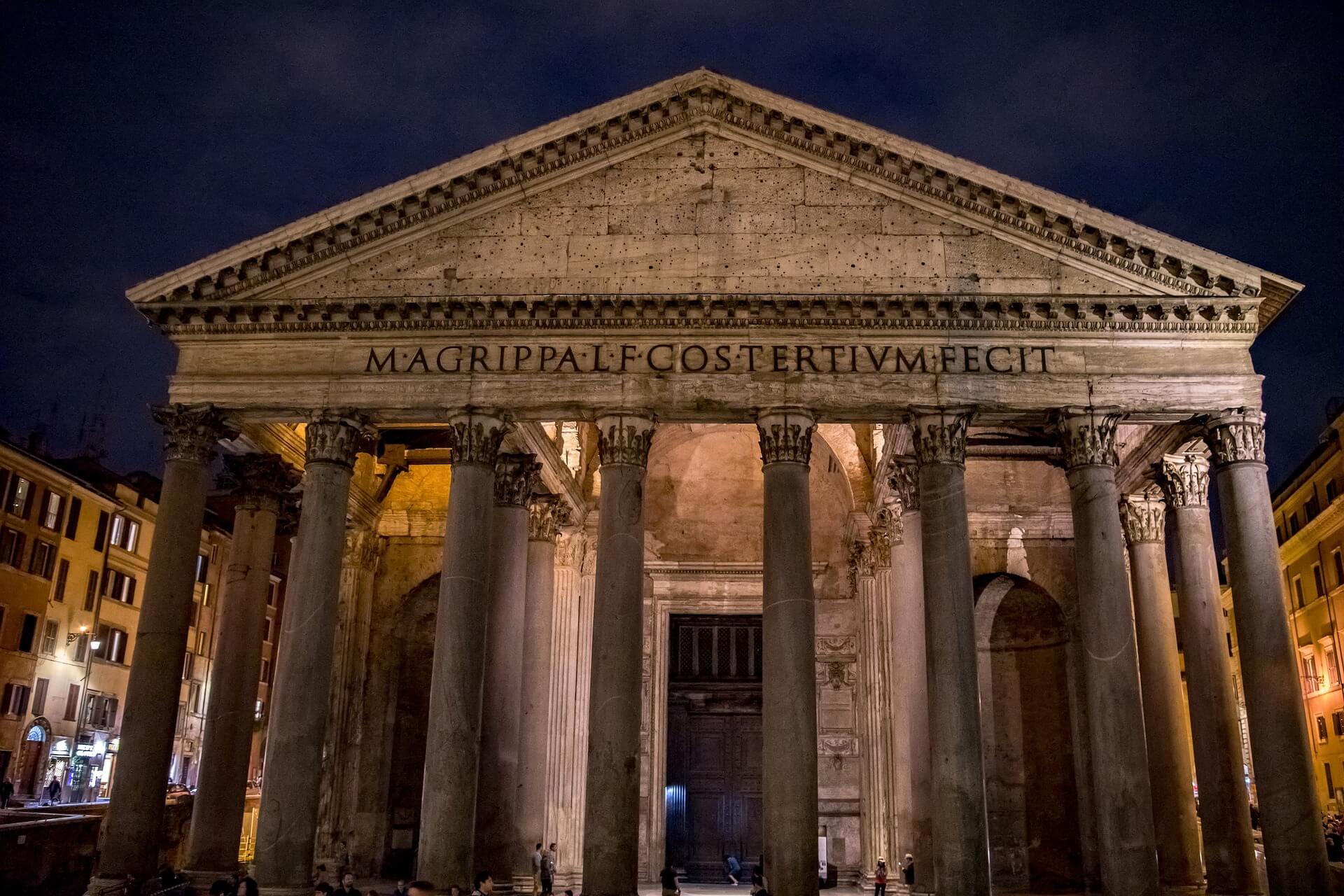
Construction of this amazing structure began approximately 1900 years ago. The architectural complex has been well preserved to this day. There was another similar Pantheon in Ancient Rome. According to some historical sources, it was located in present-day Syria.
The Roman Pantheon was intended to glorify the 12 main deities and to worship deceased and living emperors. In this sacred place, rulers ordered the installation of their life-size statues to emphasize the divine nature of state power.
Emperors chose the land for the Pantheon based on priests’ predictions and ancient world scientific achievements. Here, ancient scientists installed stone devices for astronomical calculations, observed celestial bodies, and accurately determined the timing of natural disasters and climate changes.
Today, the Pantheon belongs to the Catholic Church and serves as a Christian temple. Its decoration represents a mix of ancient and medieval art. You can see ancient Egyptian, Greek, and Roman decorative elements and statues of early Christian saints here. The Pantheon is open for visits daily (except for major Italian public holidays). Entry is free.
This structure still holds many intriguing mysteries. For example, scientists have not yet been able to determine the metals used to create its dome and the foundation’s construction technologies. The foundation supports 6-meter-thick walls, does not deform, and remains intact even during strong underground shocks.
Piazza Navona
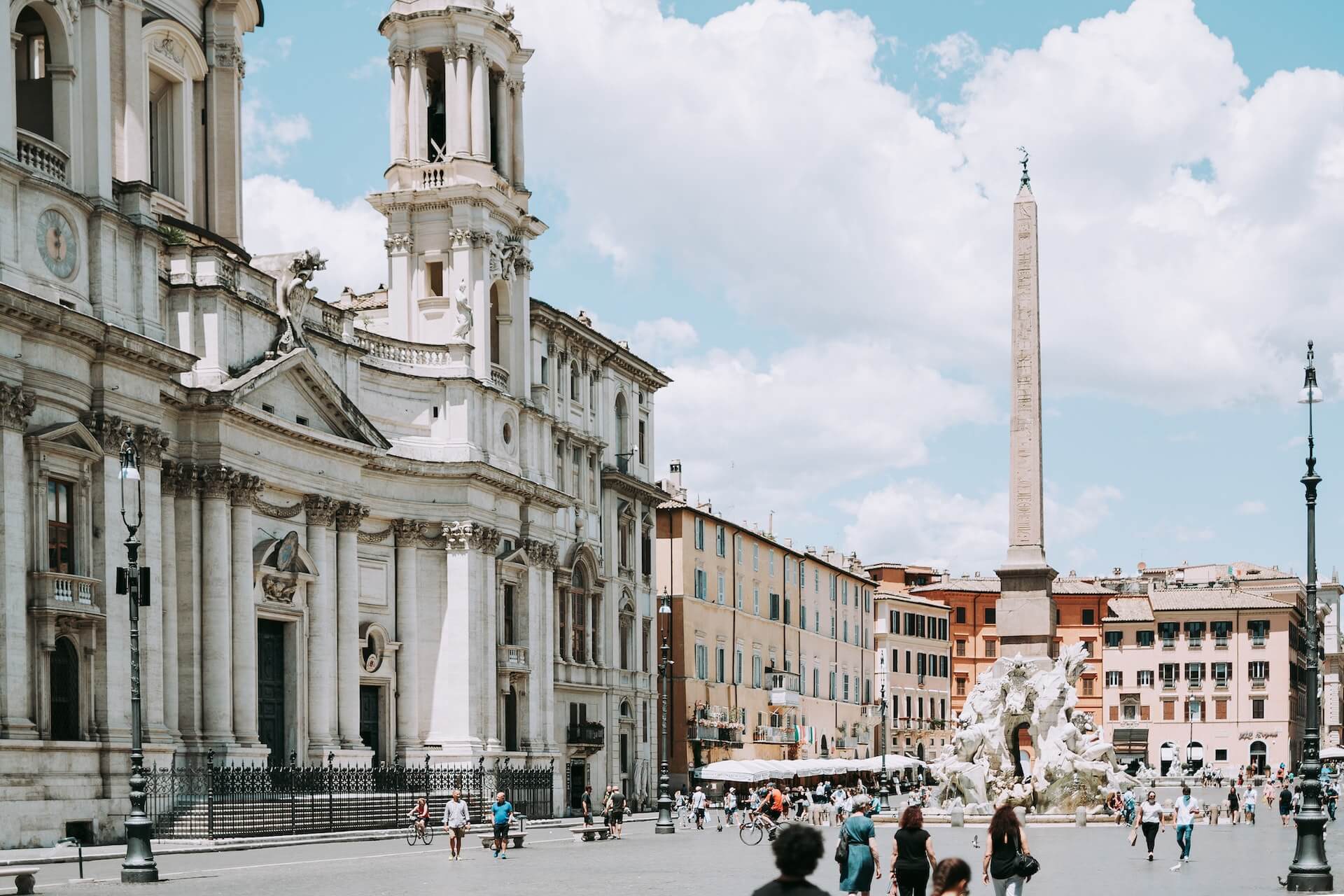
Once, athletes competed in games dedicated to ancient gods on this famous square near the Pantheon. The ancient Roman stadium could accommodate 15,000 spectators. It also served as a massive exhibition site where Roman citizens admired sculptures of gods and heroes.
Throughout its history, Navona has been a place for fairs, folk festivals, and knight tournaments. The first palaces and fountains were built here about 500 years ago, but the square’s current appearance began to take shape 100 years later.
Navona is famous for its magnificent palaces, churches, fountains, and statues. At any time of day or night, you can listen to live music here, relax in cozy restaurants and cafes. Time seems to have stopped, frozen in a unique romantic dimension. No wonder travelers and newlyweds are drawn to the authentic atmosphere of this place like a magnet.
Day 2
This day is best dedicated to exploring landscape parks and museums. They are conveniently located in the city’s heart, within walking distance of ancient Christian temples, luxurious squares, grand staircases, and fountains adorned with magnificent sculptures. Visiting such places in Rome will help you easily immerse yourself in the atmosphere of the ancient world, early Middle Ages, and Renaissance.
Piazza del Popolo
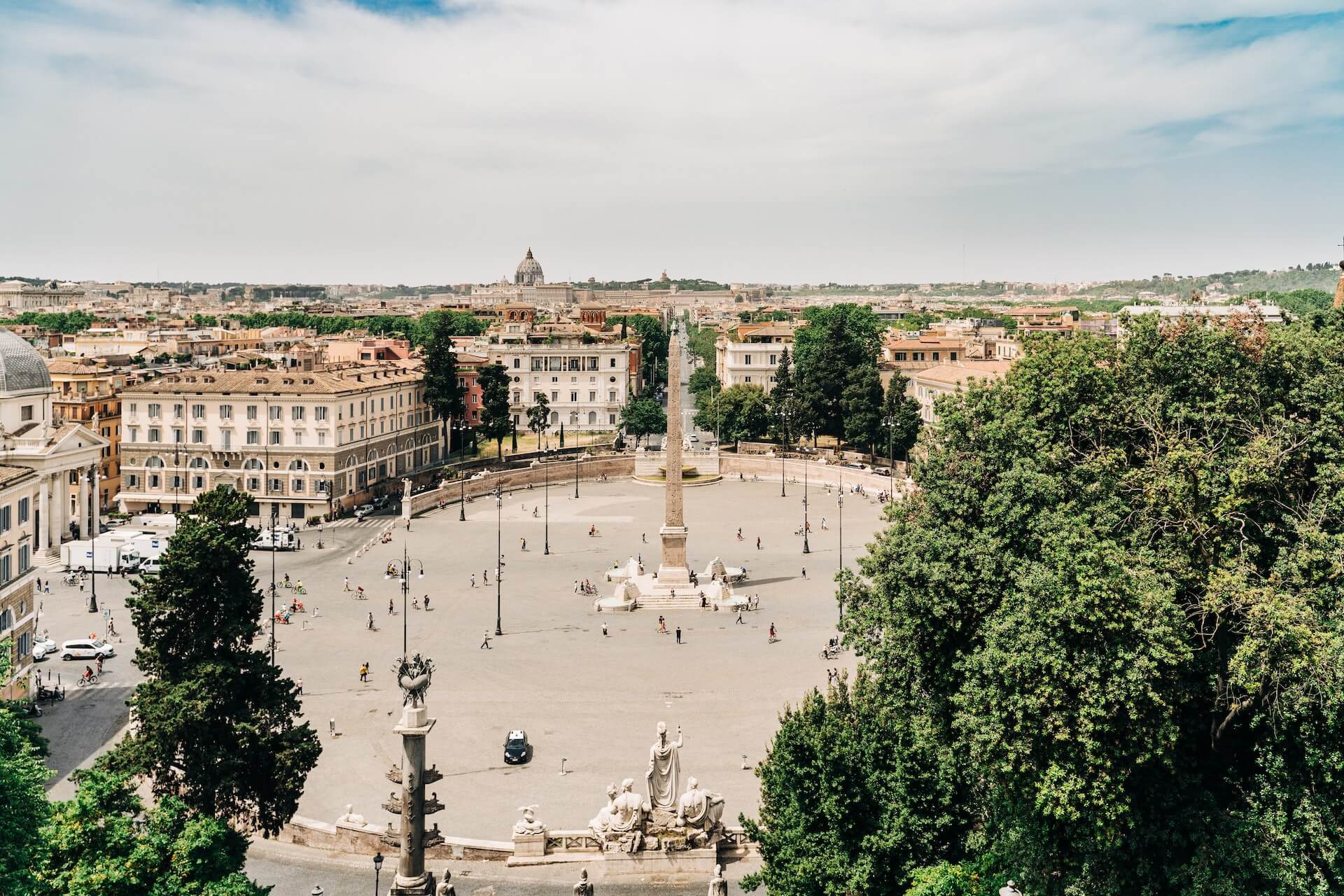
The “People’s Square” is 165 meters long. It is open for visits around the clock. This place has always been and remains the most popular in Italy under any authority. Fairs and festivals began to be held here 1,700 years ago. The thirst for bread and circuses has left its mark on the square’s history. Italians traded here, executed criminals, announced royal decrees, watched performances by wandering artists, and rested from daily labor.
Today, the square is elliptical (it used to be trapezoidal). Piazza del Popolo is surrounded by Catholic churches, parapets with sculptures, fountains, government buildings, and observation decks. All of them were built at different times, so the appearance of the objects easily traces the history of Italian art development.
Renowned artists, sculptors, and architects from the Renaissance participated in planning, decorating, and arranging the square. Remarkably, in our time, there has been no break in the continuity of creative traditions here. Piazza del Popolo has turned into a place for traveling open-air exhibitions. At any time of year, you can see all sorts of curiosities here: from powerful police cars to whimsical installations with deep philosophical meaning.
Pincio Hill
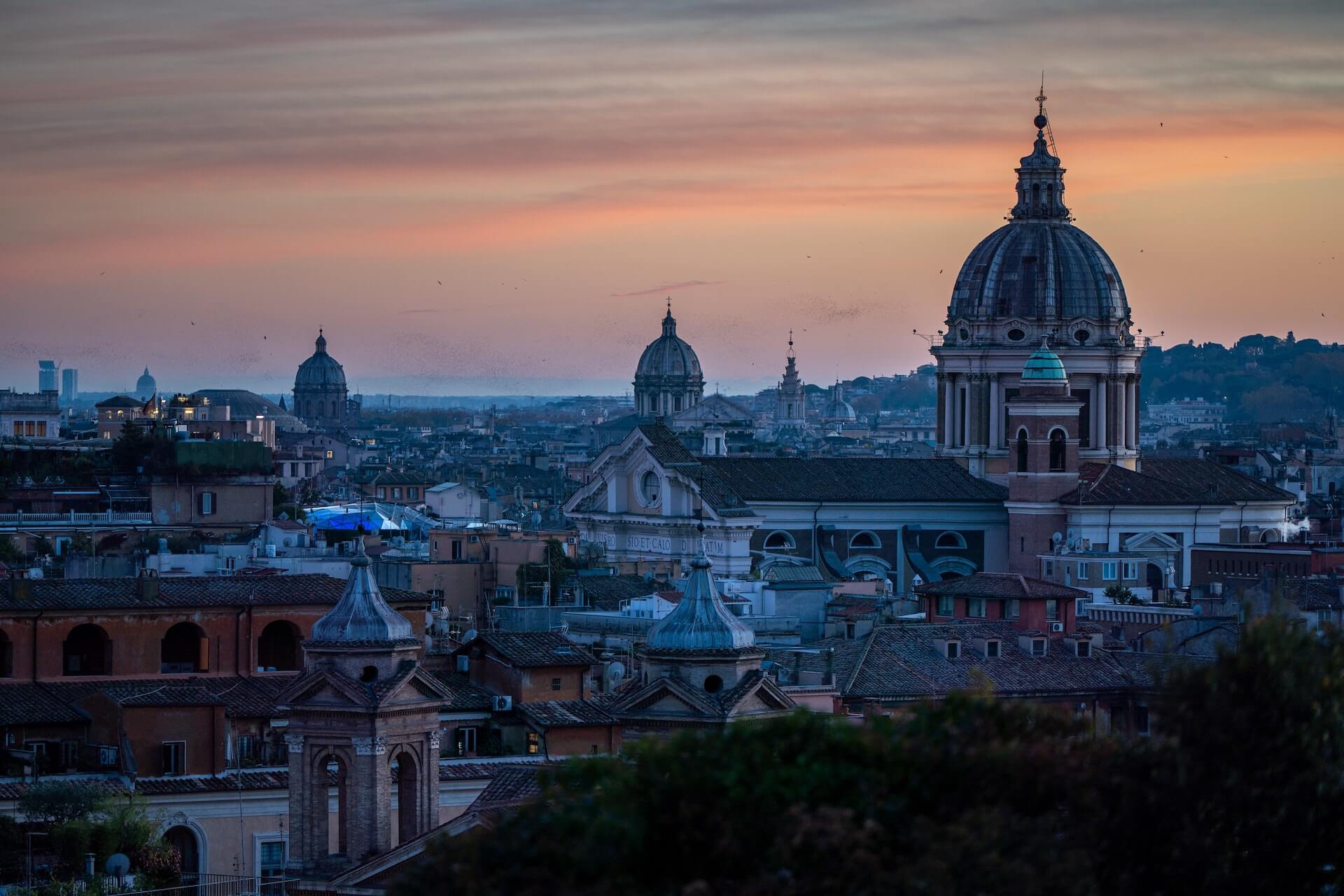
This elevation is not included in the list of the seven legendary Roman hills, but it is very popular with tourists. The reason is simple: Pincio offers a magnificent view of the Eternal City.
The hill is named after a Roman family that once owned this territory. In ancient times, villas of local nobility, beautiful gardens, and aristocrats competed in the luxury of building decorations here.
The structures that have survived to this day on Pincio were built much later: 450-500 years ago. In the first half of the 19th century, a park was established here. The list of well-known Pincio attractions includes various monuments: from an old farmhouse, an alley with busts of celebrities, to statues and marching stairs.
Villa Borghese
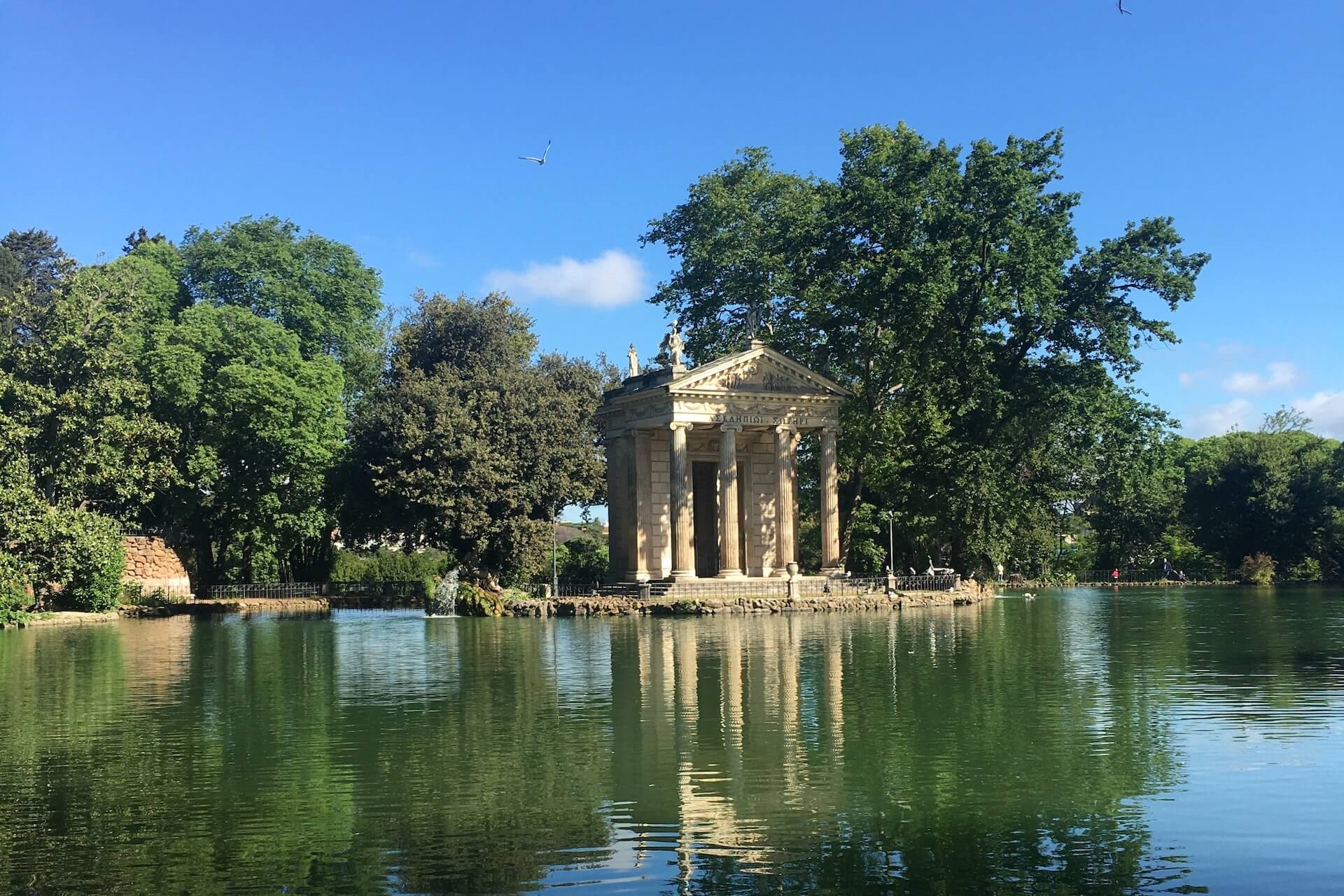
The history of the famous landscape complex dates back to ancient times. It occupies a significant part of Pincio Hill. The total area of the Borghese park is 80 hectares. You can enter this amazing place from the southern and western entrances. Classical and neoclassical styles reign here. Officially, the villa’s history is over 400 years old, but there are legends that altars to ancient gods once stood here and priests conducted mysterious rituals.
The park houses numerous historical monuments. You can see gardens, ponds, a palace, an art gallery, a stadium, a theater pavilion, statues of great politicians, and creative individuals. There are even sculptures of Alexander Pushkin and Nikolai Gogol.
The temples on the park’s territory are new constructions, as they are only a few hundred years old. They are modeled after ancient structures and dedicated to Egyptian and ancient gods, heroes, and emperors. Once, all this splendor belonged to the wealthy Italian Borghese family. Today, the villa is a public exhibition space and a favorite place for city dwellers to relax.
Villa Medici
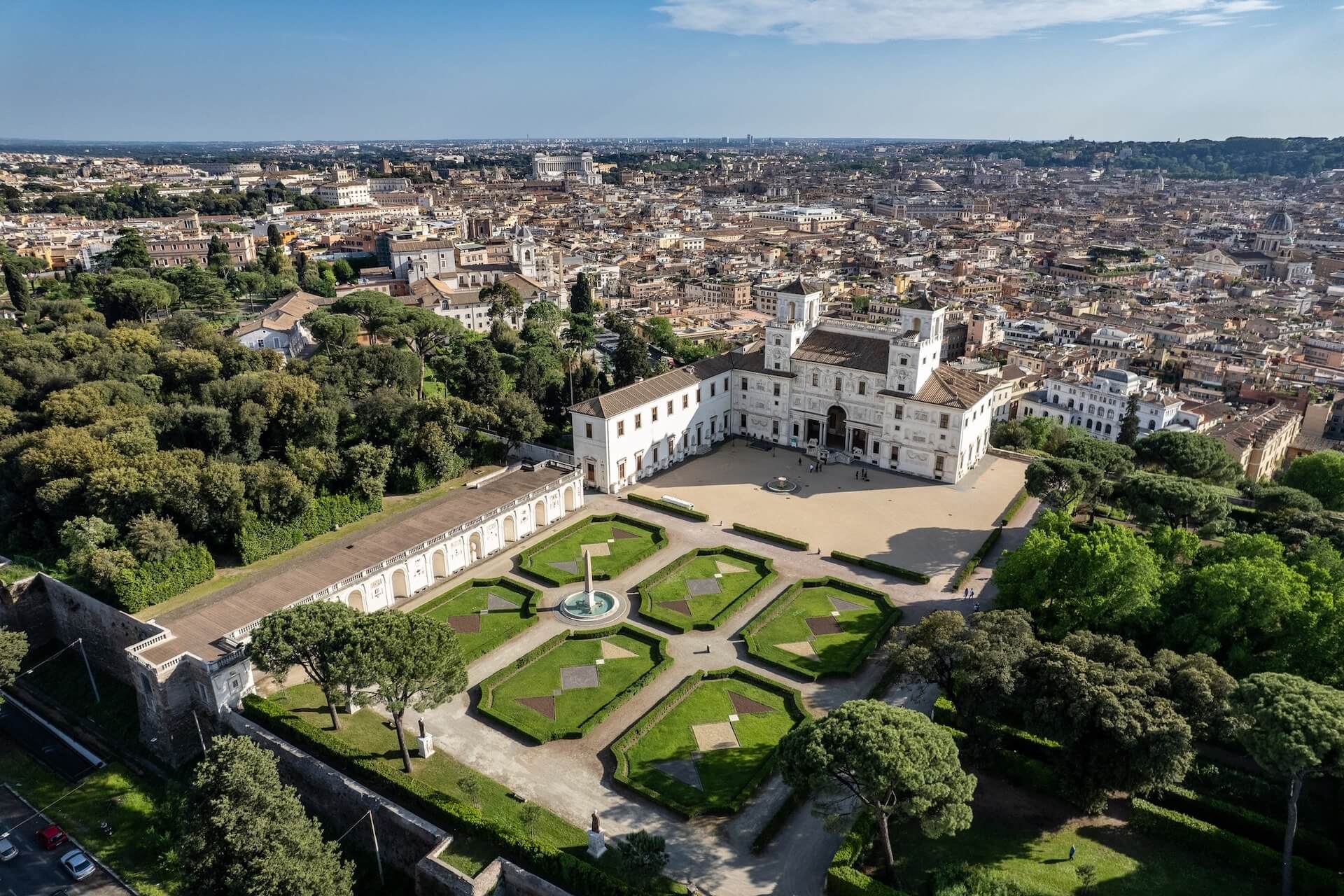
This architectural monument dates back to the Renaissance. Its name reminds us of the well-known oligarchic family famous for murders, intrigues, and other infamous deeds. The villa is adjacent to Borghese Park. It houses magnificent palaces, collections of Roman sculptures, and collections of authentic ancient bas-reliefs and more.
The Medici family died out 300 years ago, but many churches, paintings, and other art masterpieces created with its funds remain in Italy. This family entered European history with a reputation almost as notorious as the Borgia dynasty. Remarkably, even the Villa Medici is located where a famous murder occurred. It was here that the Roman empress Messalina, whose name became synonymous with debauchery and insatiable lust for power, died.
Spanish Steps

The structure is located next to Villa Medici. It is a grand staircase initially intended for descending worshippers who attended services in the church at the top of Pincio Hill. The structure consists of 136 steps and looks mesmerizing at any time of day or night.
Initially, the staircase was to be called the French Steps. Then, due to political changes, it became the Spanish Steps, symbolizing the powerful papal authority and the grandeur of the ruling Bourbon house, whose members became rulers of Spain, France, Sicily, Luxembourg, and other states. The Bourbon dynasty still exists today, and its descendants have significant influence on the European political scene.
The staircase’s form and decoration fully comply with Baroque canons, but the surrounding architectural ensemble can be called classical. The structure did not hide the height differences on the hill; on the contrary, it highlighted them, turning certain sections of the elevation into observation decks.
At the foot of the staircase is the famous Roman attraction: a fountain in the shape of a half-sunken boat. From this lower point, there is a stunning view of the hill and the church at its summit.
Piazza di Spagna

This architectural monument is surrounded by famous attractions, including the Spanish Steps and the Palace of Spain. Nearby are the column with the statue of the Virgin Mary and the Catholic Church of Trinità dei Monti.
The story of the naming of Piazza di Spagna is similar to that of the Spanish Steps. Its architecture intertwines elements of classical, neoclassical, and Baroque styles. The layout and decoration of the square are reminiscent of ancient times but also embody the aesthetic ideals of the Renaissance.
The square always exudes a light, festive atmosphere. Here, you will find boutiques and shops offering elite goods, all made by Italian manufacturers. Products from other countries are not allowed here.
The square also hosts theatrical performances. It is a common sight to see film shoots here, which later become classics of world cinema. Piazza di Spagna is adored by couples and hopeless romantics.
Barberini Palace
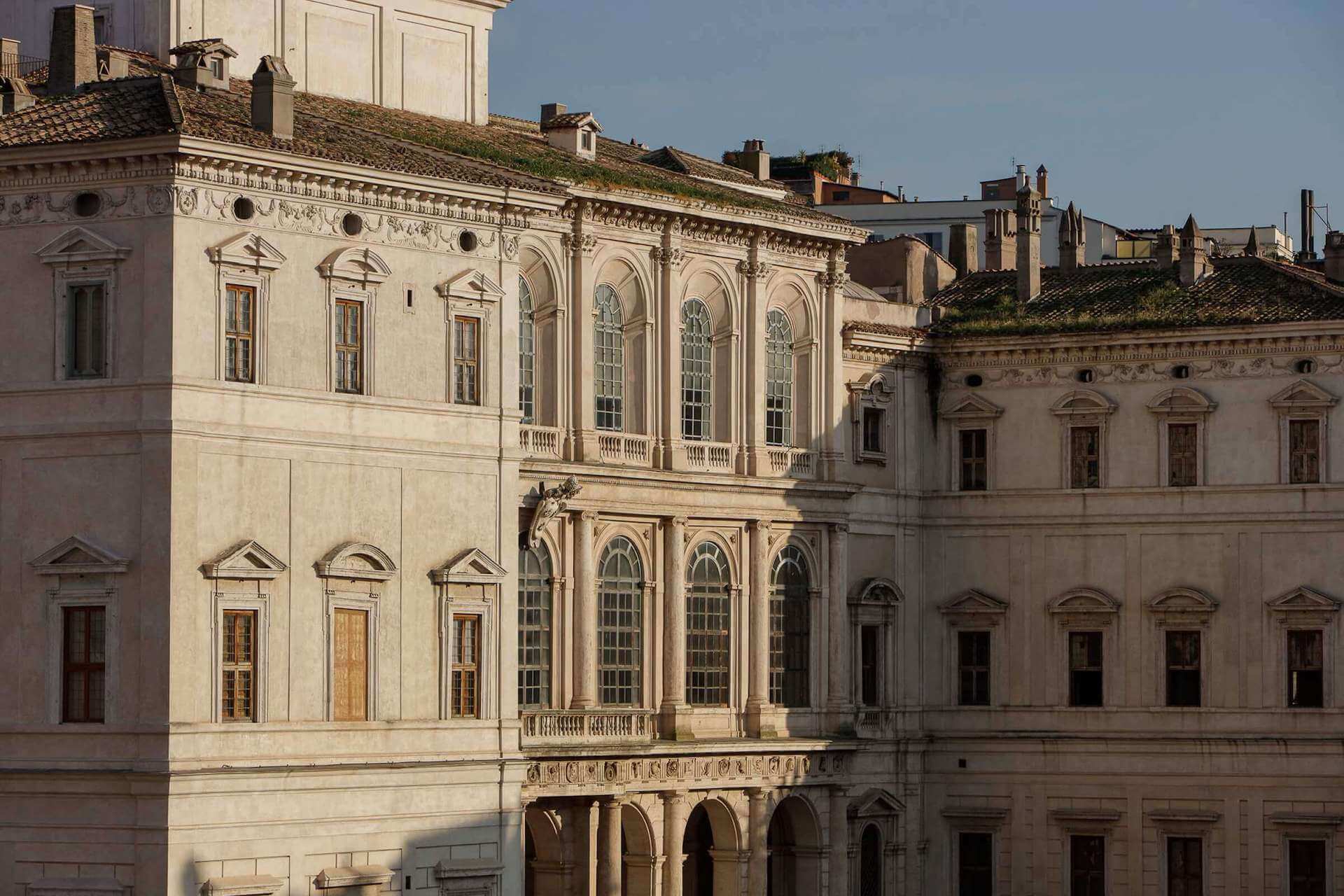
The palazzo is named after the famous influential family. Today, it houses a 3,000-seat theater and two large exhibition spaces conducting research in art. Four hundred years ago, the creation of Palazzo Barberini involved outstanding Italian architects, sculptors, artists, and decorators.
The building became state property almost 100 years ago. Before that, it was a hotbed of political intrigue, where the fates of Europe were decided, and even an officers’ club operated. The layout and architecture of the palace are shrouded in mystery. Officially, it is recognized as a Baroque masterpiece, but it features elements of other styles, secret rooms, strange passages, and exact copies of ancient temple halls.
Interestingly, Italians consider this grand structure a typical rural villa. Whether this is popular irony or recognition of the historical fact that the palace once looked modest compared to similar structures remains uncertain.
National Roman Museum
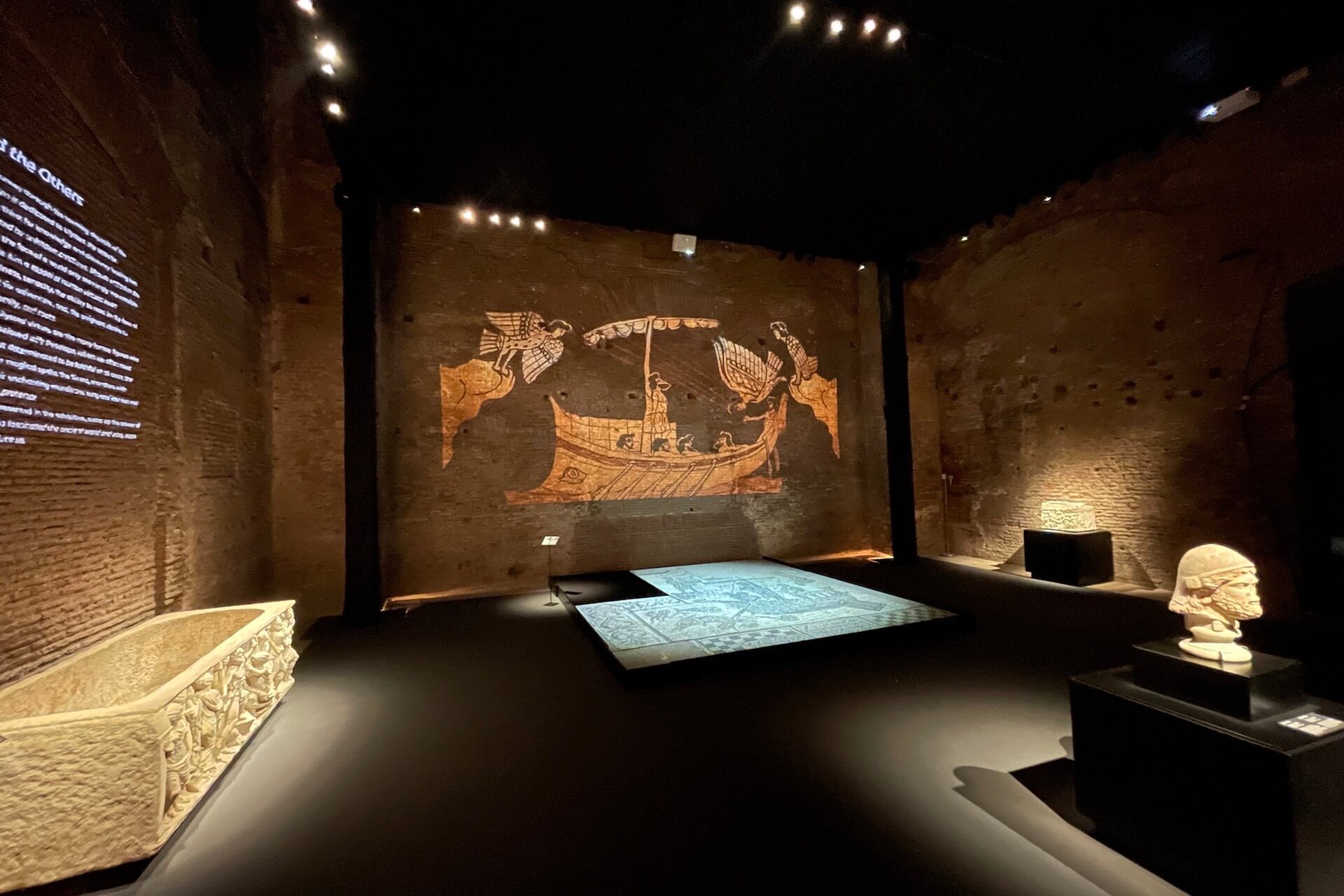
This exhibition site is often called the cultural calling card of the Eternal City. The museum holds the world’s largest collections of ancient art: from sculptures and temple decorations to frescoes and mosaics depicting scenes from the lives of gods, emperors, and heroes.
Its collections are housed in various locations. They are situated in the city center, so it is possible to explore the branches of the National Museum in one day with sightseeing tours. Note that its branches are open to visitors daily from 11:00 AM to 6:00 PM, except on Mondays, Catholic Christmas, and New Year’s Day.
The National Museum is relatively young (around 130 years old), but the history of its collections spans many centuries. The first collections were formed by Jesuit monks, and the museum’s funds are continually expanding.
If time does not allow you to visit all the museum’s exhibition sites, experienced travelers recommend choosing one and enjoying the ancient artifacts. For example, at the Baths of Diocletian, you can see a genuine ancient fountain, collections of tombstones, and sculptures. In the neighboring palace, you will find collections of mosaics, frescoes, sarcophagi, coins, and jewelry.
In the aristocratic residence of Altemps, located near the Church of Saint Apollinaris, you will find collections gathered by the renowned Ludovisi family, whose members led the Catholic Church 400 years ago. If you are interested in recent archaeological discoveries, head to the Field of Mars. There, in the Crypta Balbi (once part of the ancient Roman theater complex), you will see ancient and medieval rarities.
Teatro dell’Opera di Roma

This iconic building is a must-see for true music lovers. Today, world-class stars perform here, and travelers enjoy admiring its majestic architecture. However, this art venue is bankrupt.
The theater no longer has its troupe or orchestra. In the new century, it has gained a reputation for high-profile social scandals. So, do not be surprised if you see paparazzi nearby. Some consider it mystical that the bankrupt theater on Via Torino remains one of Europe’s leading theatrical venues.
There is even a legend that during the building’s reconstruction, a mysterious magician hid a bottle with a spell here. The sorcerer was a fan of Italian opera, so perhaps his favorite theater remains open to this day.
Basilica of Santa Maria Maggiore
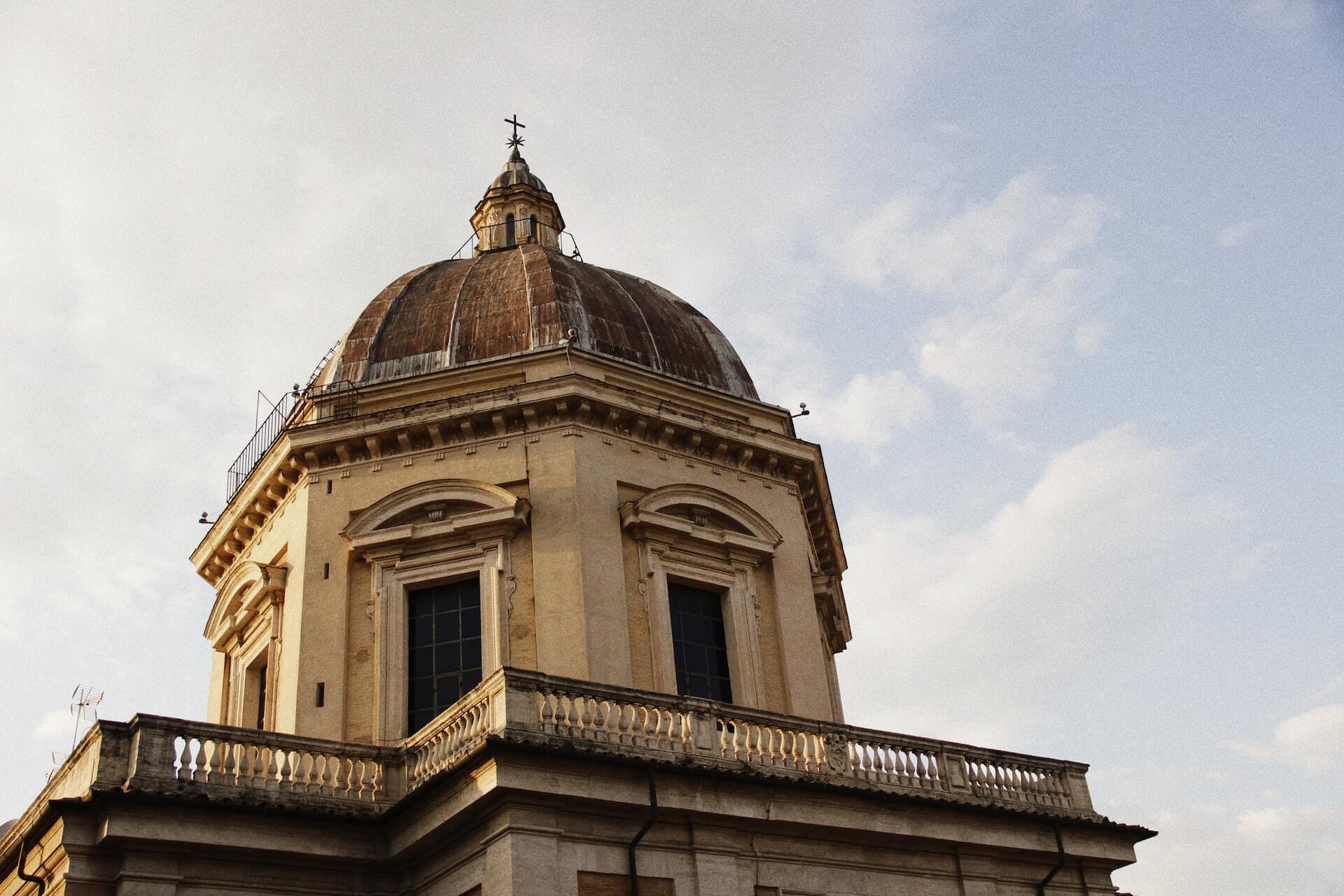
The history of this ancient city Catholic church (located on the square of the same name) began 1,600 years ago. It was built, rebuilt, arranged, and renovated over a thousand years.
The basilica is situated on one of Rome’s seven legendary hills: Esquiline. Remarkably, it once snowed here in the middle of a hot summer. This snow was a sign for believers of where to build a church in honor of the Virgin Mary.
The basilica and the area around it visually resemble a sun. In the center of the square stands a massive column with a statue of the Virgin Mary. Once, there were eight identical pedestals in the world, but only one has survived to this day. Beautiful Roman streets radiate from the basilica building in all directions. This layout has deep ideological significance, emphasizing the Catholic Church’s role in the world and the pope’s power.
The beautiful building’s architecture intertwines Baroque and Romanesque styles. For centuries, the Catholic Church’s leaders allocated substantial funds to gather art masterpieces (paintings, statues, panels, stained glass, decorative elements, mosaics) dedicated to the Virgin Mary.
Entry to the basilica is free. Tourists here are allowed to ascend to the papal loggia. This part of the building is an exact replica of the platform of St. Peter’s Basilica (located in the Vatican), from which the Catholic Church’s leaders deliver their speeches.
Day 3
The best way to conclude your three-day stay in Rome is by visiting the Vatican and its surroundings. The smallest theocratic state on Earth is also located in the heart of the Eternal City. Its area is 440,000 square meters. However, the Vatican houses the main sanctuaries of the Catholic Church.
Castel Sant’Angelo
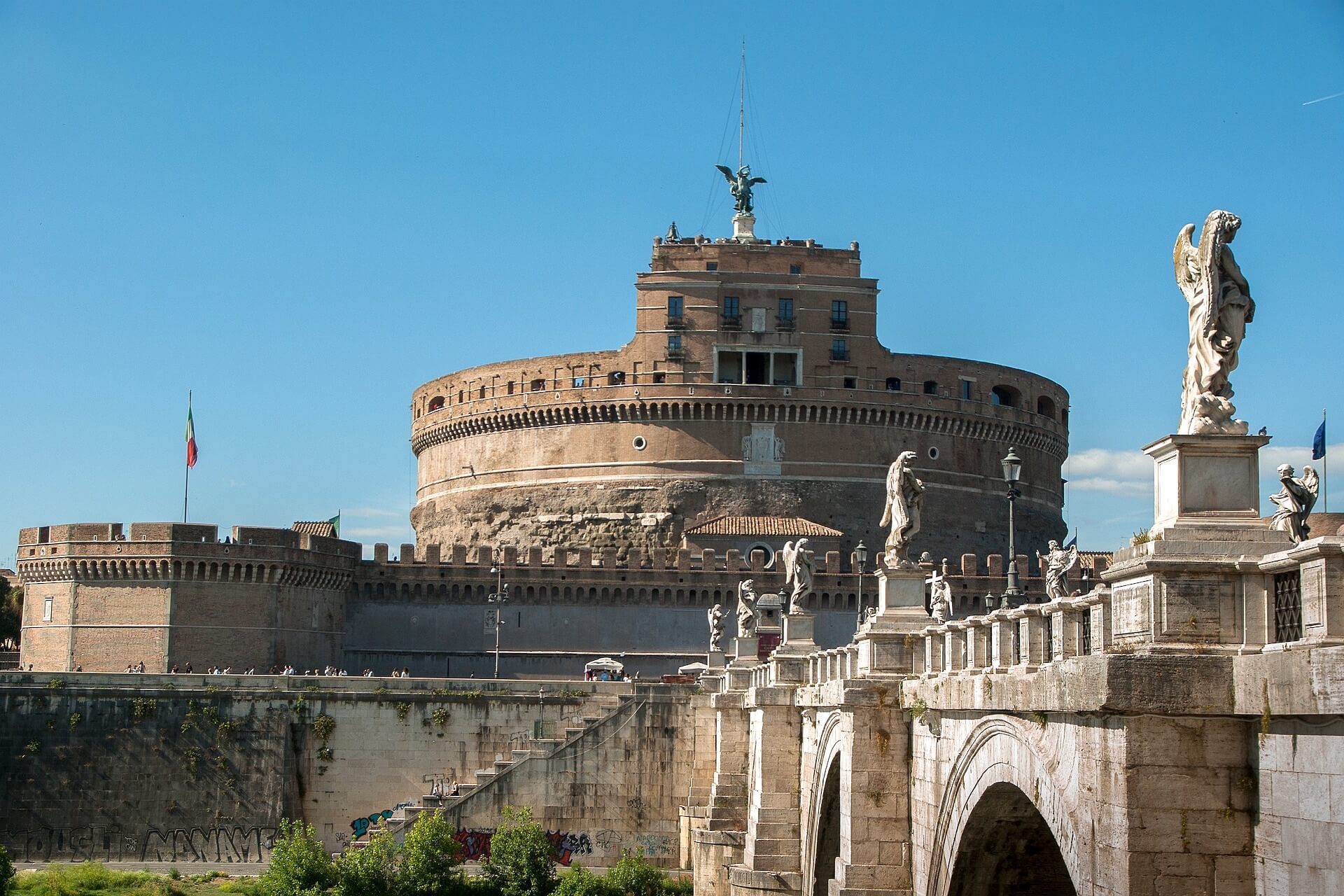
One kilometer separates this attraction from the Vatican. The castle has long been known as one of the most sorrowful places in the Eternal City. Nevertheless, it attracts Italians and numerous visitors to the country like a magnet.
The history of Castel Sant’Angelo began almost 2,000 years ago. Once, it was the tallest defensive structure here. Initially, it was built as an imperial mausoleum but eventually became a Papal residence and prison. In the Sorrowful Castle, inquisitors tortured and executed heretics and political criminals. Prisoners who ended up here had no chance of escape.
Today, the castle houses a military museum. The ancient fortification remains fully defensible and can turn into an impregnable fortress even now. The galleries, courtyard, Halls of Justice and Treasure, archive, and library of the Sorrowful Castle are well-known worldwide from scenes in popular films and video games.
St. Peter’s Square

This historical and architectural monument is located in the Vatican, next to the basilica of the same name. It is a significant place for all Catholics. The square acquired its current appearance less than 400 years ago, but its history began much earlier. The attraction is located between two hills, precisely on the land owned by the bloodthirsty Emperor Nero. Here, the Apostle Peter was crucified, and public executions of the first Christians took place in the circus.
The square consists of two parts. From a bird’s eye view, they resemble human hands in an embrace. It is 320 meters long. Statues of the Apostles Peter and Paul and curved giant colonnades are installed here. The latter seem to separate the square from the surrounding world. Additionally, an ancient Egyptian artifact is installed on the sacred territory. Yes, it is the very obelisk that priests once used for magical rituals.
You can visit this unique ancient monument any day of the week for free from 7:00 AM to 11:00 PM. Taking photos with the Swiss guards protecting the square is allowed. However, Italian police officers are usually not pleased with such attention.
St. Peter’s Basilica
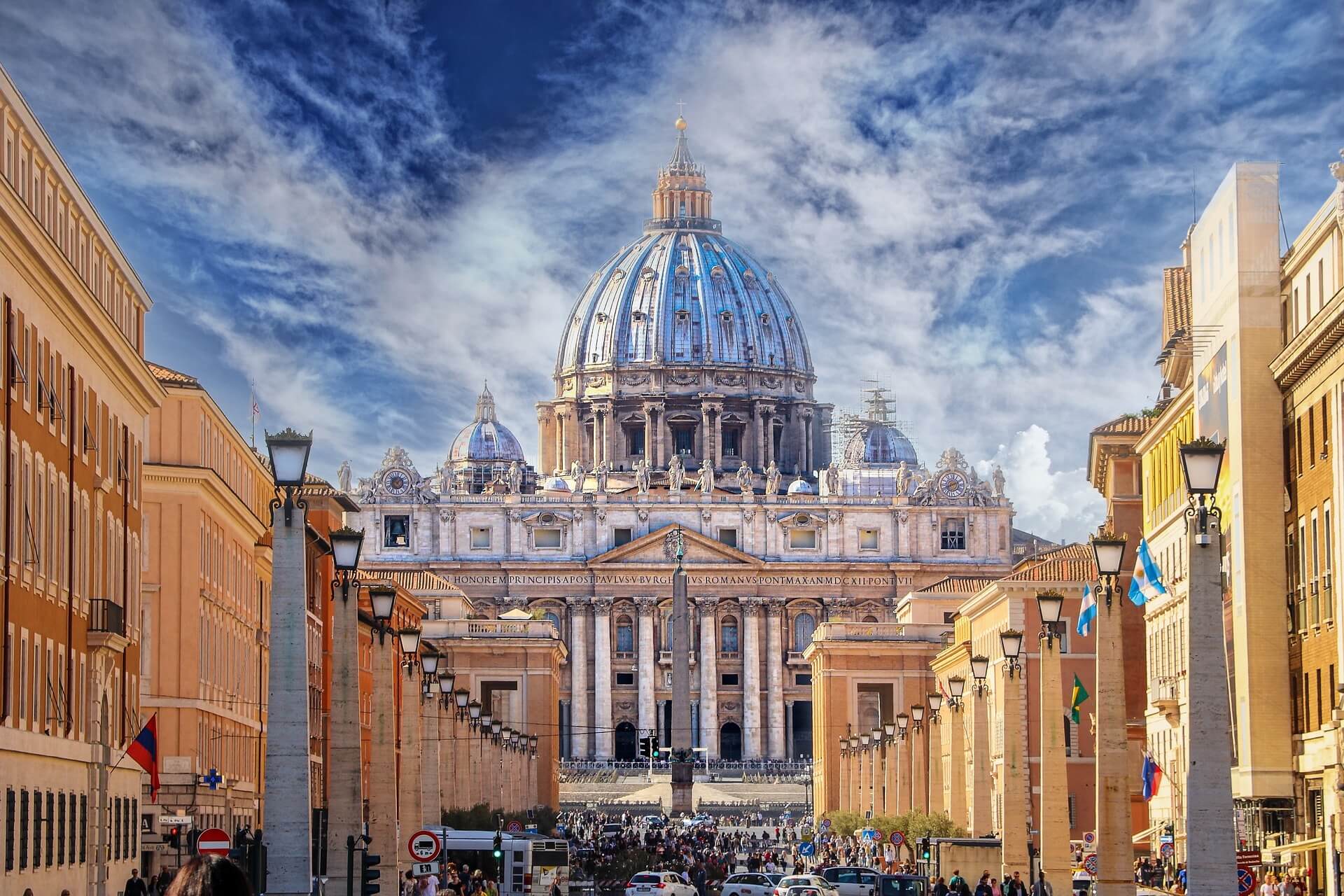
Simultaneously, 15,000 people can attend a service in this building (its height exceeds 44 meters). The basilica’s architecture combines elements of the Renaissance and Baroque. The efforts of outstanding Italian masters from different generations were required to create this architectural and artistic marvel.
The first attempts to erect a church here began 1,700 years ago. Officially, the current basilica is the third building on the site of St. Peter’s execution. Part of its foundation lies directly on the remains of Nero’s circus walls. However, there is a mystery here: the territory also had gardens and an underground passage network beneath them.
The basilica remains an aesthetic standard of religious buildings. Builders and architects of Catholic churches look up to it. The building houses priceless world art masterpieces, each invaluable to humanity.
Vatican Museums
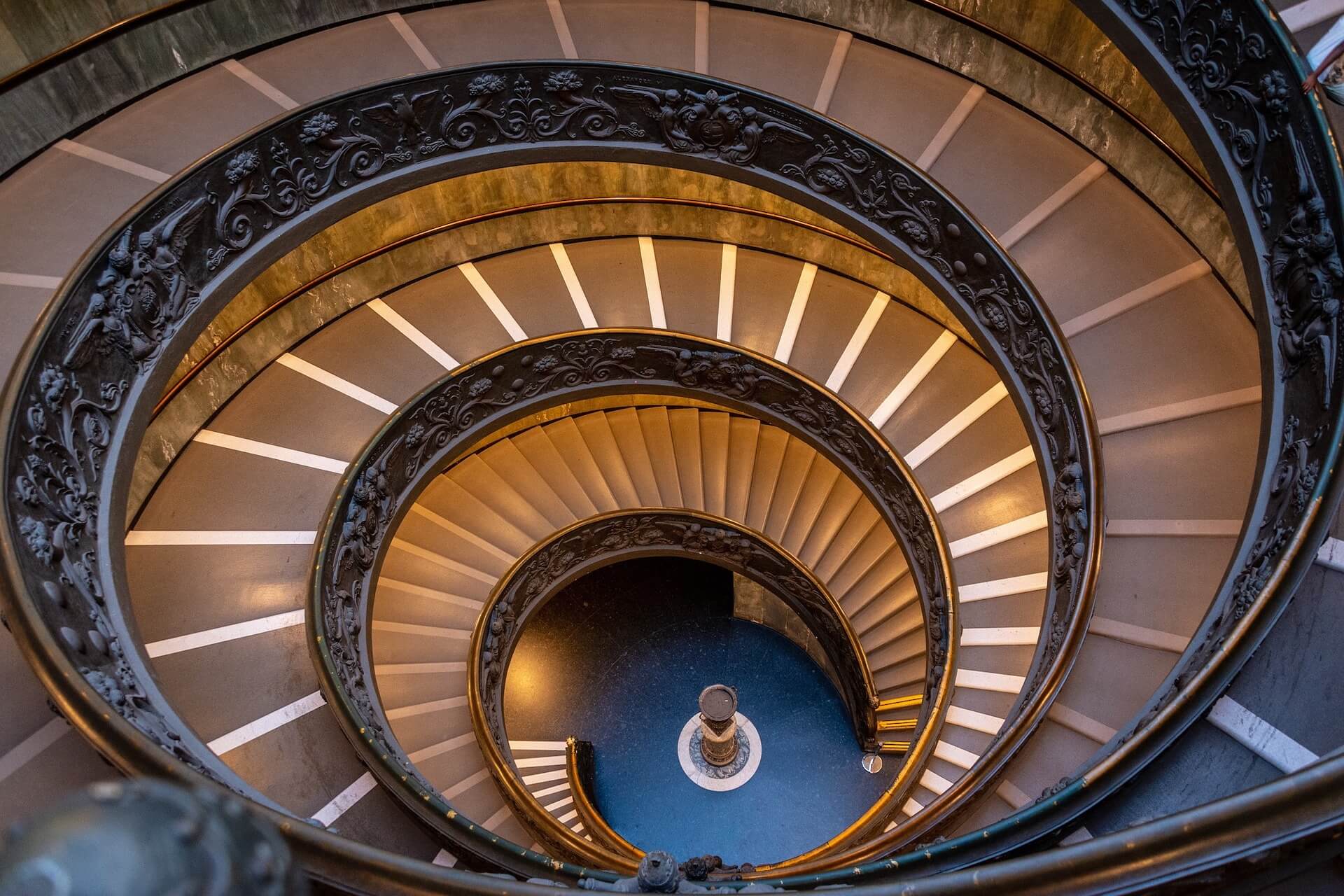
The theocratic state is renowned worldwide for its exhibition sites. They are united into a single complex since the Vatican’s territory is very small. This also simplifies the management of art galleries.
Galleries here are called halls. The Vatican has over 50 galleries where you can see the works of great Renaissance masters and contemporary artists, ancient religious sculptures, and Etruscan and ancient artifacts. Note that most art venues are open daily from 9:00 AM to 6:00 PM. The museums are closed on Sundays and major religious holidays.
Of course, the theocratic state has a separate exhibition dedicated to the history of the Vatican. It showcases everything from household items and vehicles of Catholic Church leaders to photographs, original documents, and church utensils.
An essential part of the unique museum complex is the library and the Papal Palace. The latter houses several exhibition sites, including the Sistine Chapel, Borgia Apartments, and the Galleries of Candelabra and Geographical Maps.
Vatican Gardens
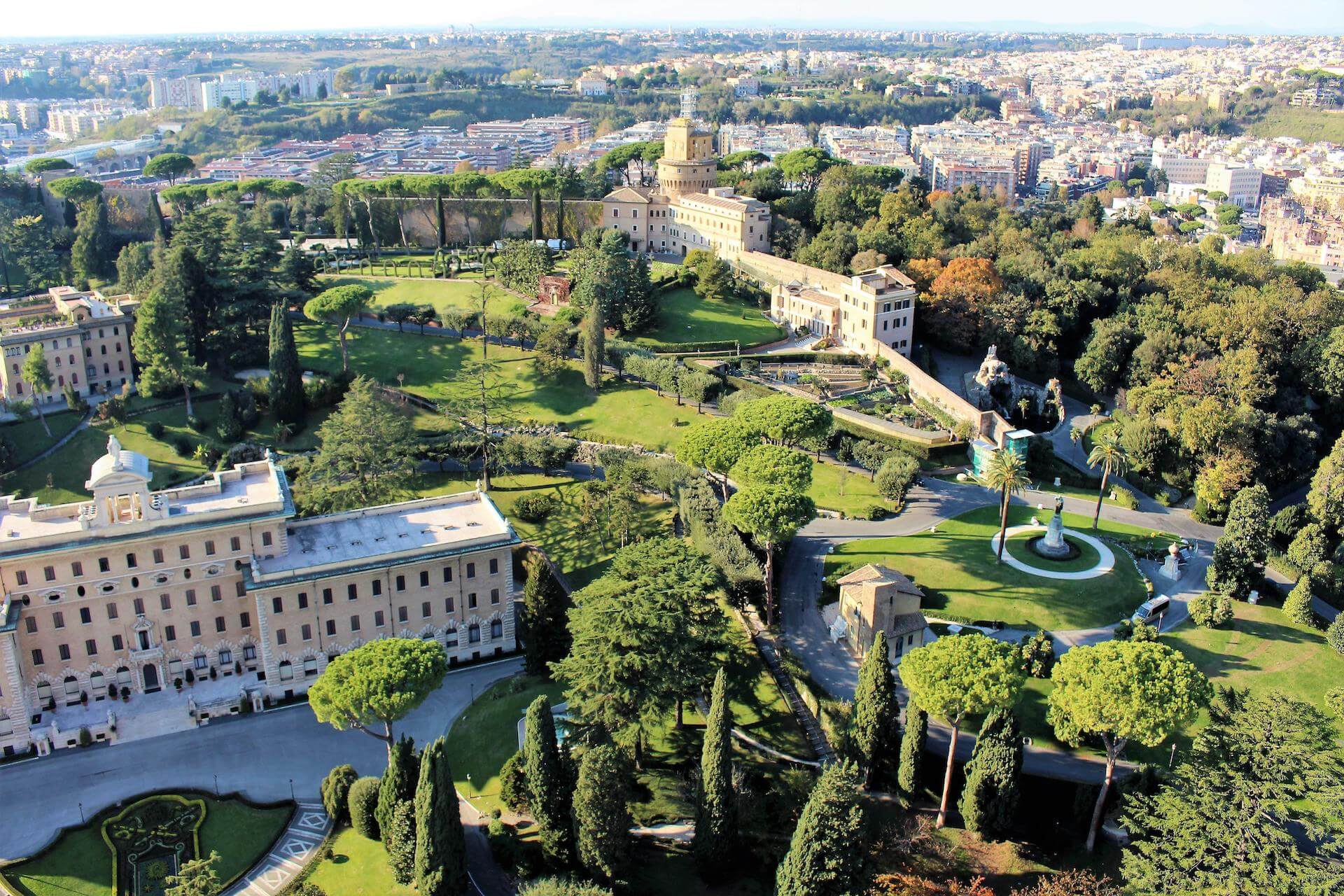
The theocratic state is immersed in greenery from parks and gardens. There are several recreational zones here, but only the two largest are called gardens. They are located in the western part of the Vatican and occupy an entire hill. Here, you can see all sorts of subtropical trees, shrubs, and flowers.
The first park zones in the Vatican appeared 700 years ago and initially resembled vegetable gardens. Yes, imagine that monks grew vegetables, fruits, and medicinal plants on the sacred Vatican hill. Later, it was arranged in the style of English gardens, and a zoo was created in the recreational zone.
The Vatican Gardens also resemble reserves. They are home to snakes, field and bat mice, hamsters, squirrels, parrots, and various bird species. Tourists are not allowed to visit the gardens independently without prior agreement and guide accompaniment! This restriction is because the landscape objects house ancient monuments and functioning religious organizations and institutions.

